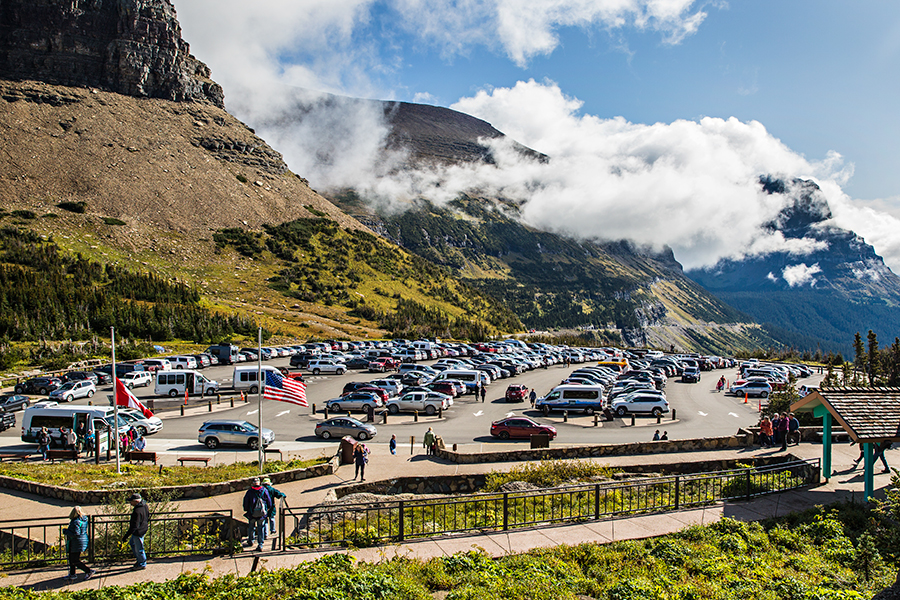Public Comment Closes on Sun Road Plan
Glacier National Park to weigh comments as it attempts to mitigate crowds and congestion on popular alpine highway
By Tristan Scott
Glacier National Park officials have closed public comment on the long-awaited Going-to-the-Sun Road corridor management plan and will begin the process of wading through the reams of suggestions that could shape future uses on the iconic alpine thoroughfare.
The plan was released in early September, and officials have said it would give them the “tools” to handle skyrocketing visitation. Between 2015 and 2017, visitation in the park jumped 40 percent. This year, more than 3 million people have visited the park through October. Many of those visitors clog the Sun Road during the busy summer months.
Suggestions in the plan to handle increased use include expanding shuttle service along the entire Sun Road; implementing a partial parking permit system at popular locations like Logan Pass, St. Mary and the Virginia Falls Trailhead, as well as prohibiting overnight parking (thus preventing people from parking and going for a multiday excursion in the backcountry while taking up valuable parking lot space); constructing new parking lots on the east and west sides of the park; improving and adding trails and adding additional bathrooms in popular areas; improving services for bikers, including the addition of bike racks; during peak visitation, turning part of the Avalanche Creek Campground into additional parking; and extending visitor hours at the Apgar and St. Mary visitor centers.
The plan also suggests using a permit system on popular trails like the Highline to help limit the number of people on the trail during busy times of the year. While a permit system has been used for backcountry camping spots in Glacier, such a system has never been used to control access on trails in the park.
Some submitted comments raise concerns that the plan omits the determination of a “carrying capacity” for the Sun Road, without which the plan’s site-specific strategies for mitigating crowds and congestion will not serve as long-term solutions.
Jack Potter, who worked in the park for more than 40 years before retiring as chief of science and resource management, wrote that the plan, by stopping short of determining a carrying capacity, fails to achieve its fundamental task.
“In reality, at times there are just too many visitors, that in aggregate contribute to overall road congestion, parking issues, and trail crowding, let alone resource impacts, and it appears it could get worse,” Potter wrote, urging officials to consider use limitation, particularly as it relates to private vehicle entry. “The issues may not go away with any comprehensive use limitation but the hot spots may improve or remain below thresholds and triggers. A comprehensive use plan, with use limitations is the first step to a real plan for the future, not merely addressing symptoms of crowding.”
Dave Hadden, executive director of Headwaters Montana, echoed Potter’s concerns, adding that proposals to add more parking along the corridor miss the mark.
“In total, the proposed corridor plan adds millions in additional infrastructure and management costs while completely avoiding the simplest solution: limiting the number of cars on the Going-to-the-Sun Road during the peak visitor season.
The full plan is available online at http://parkplanning.nps.gov/GTSRPlan.